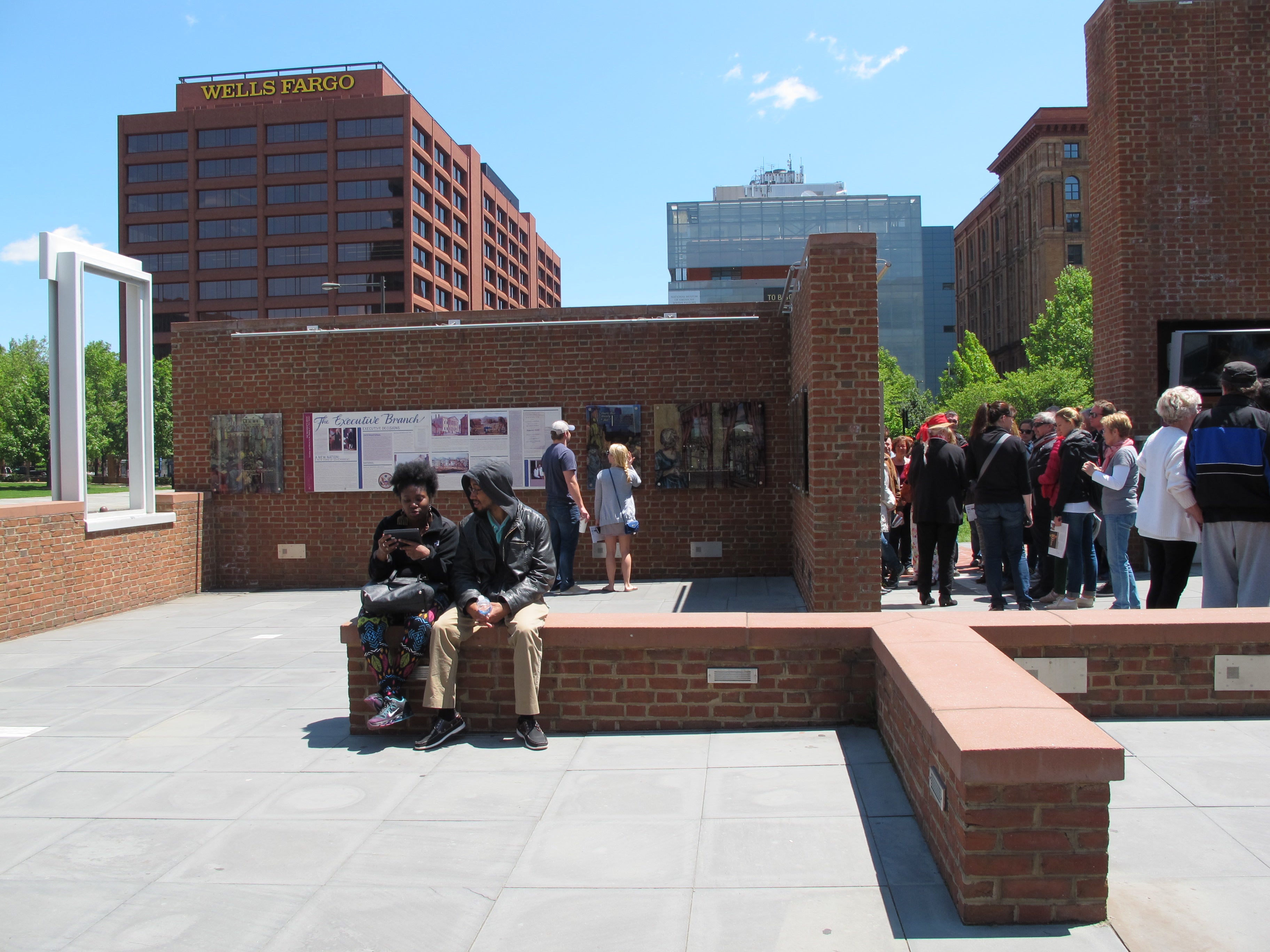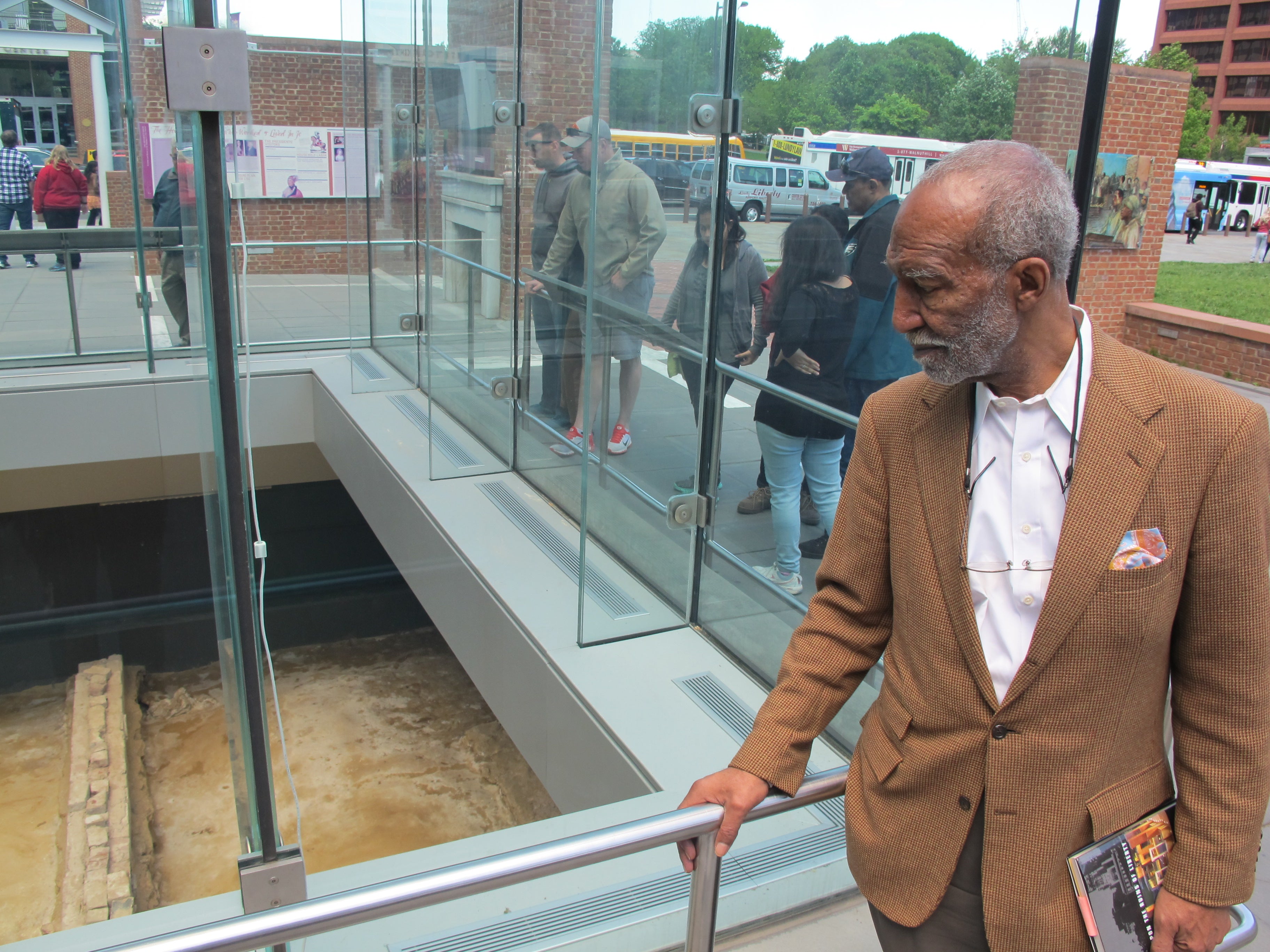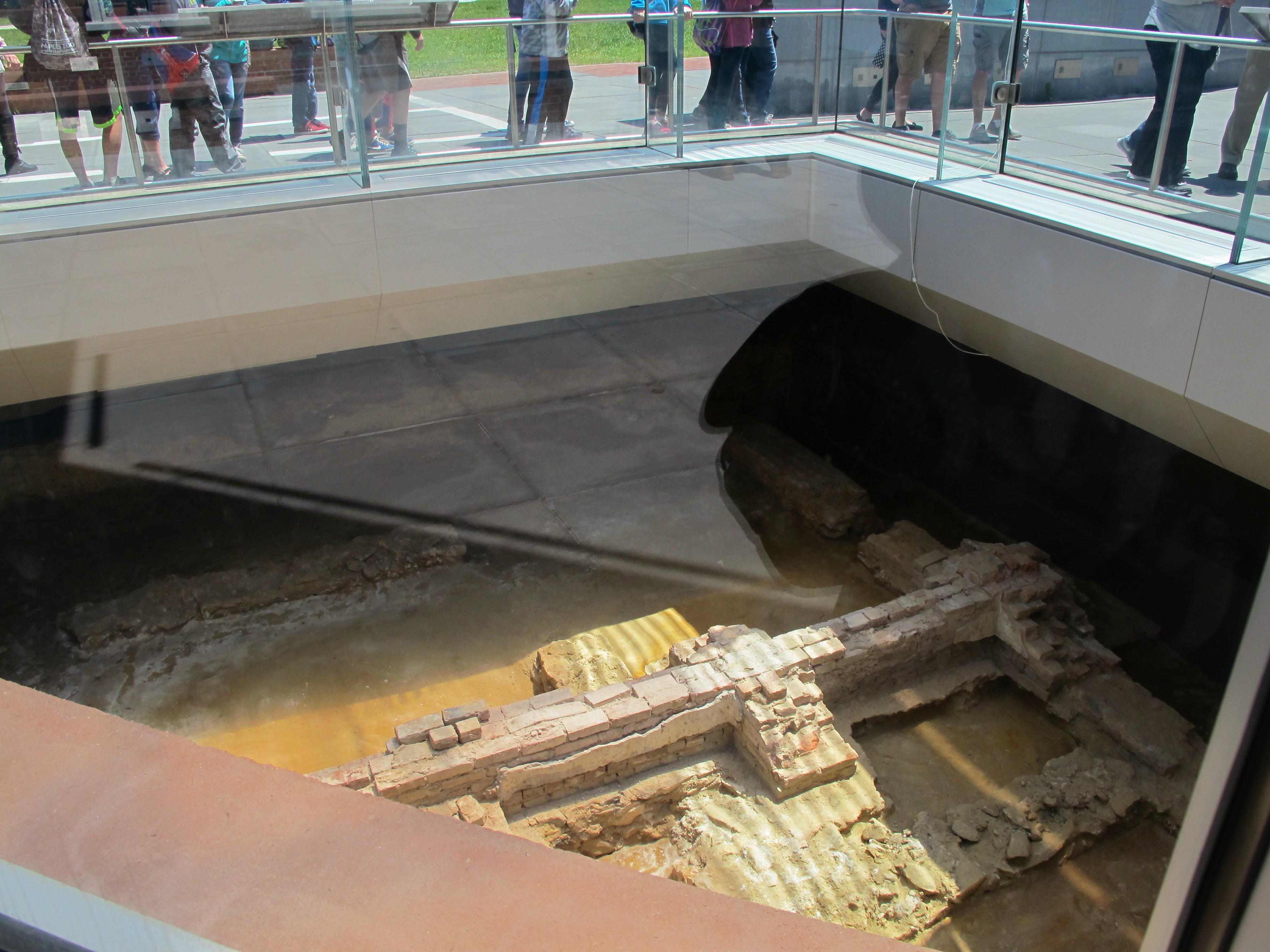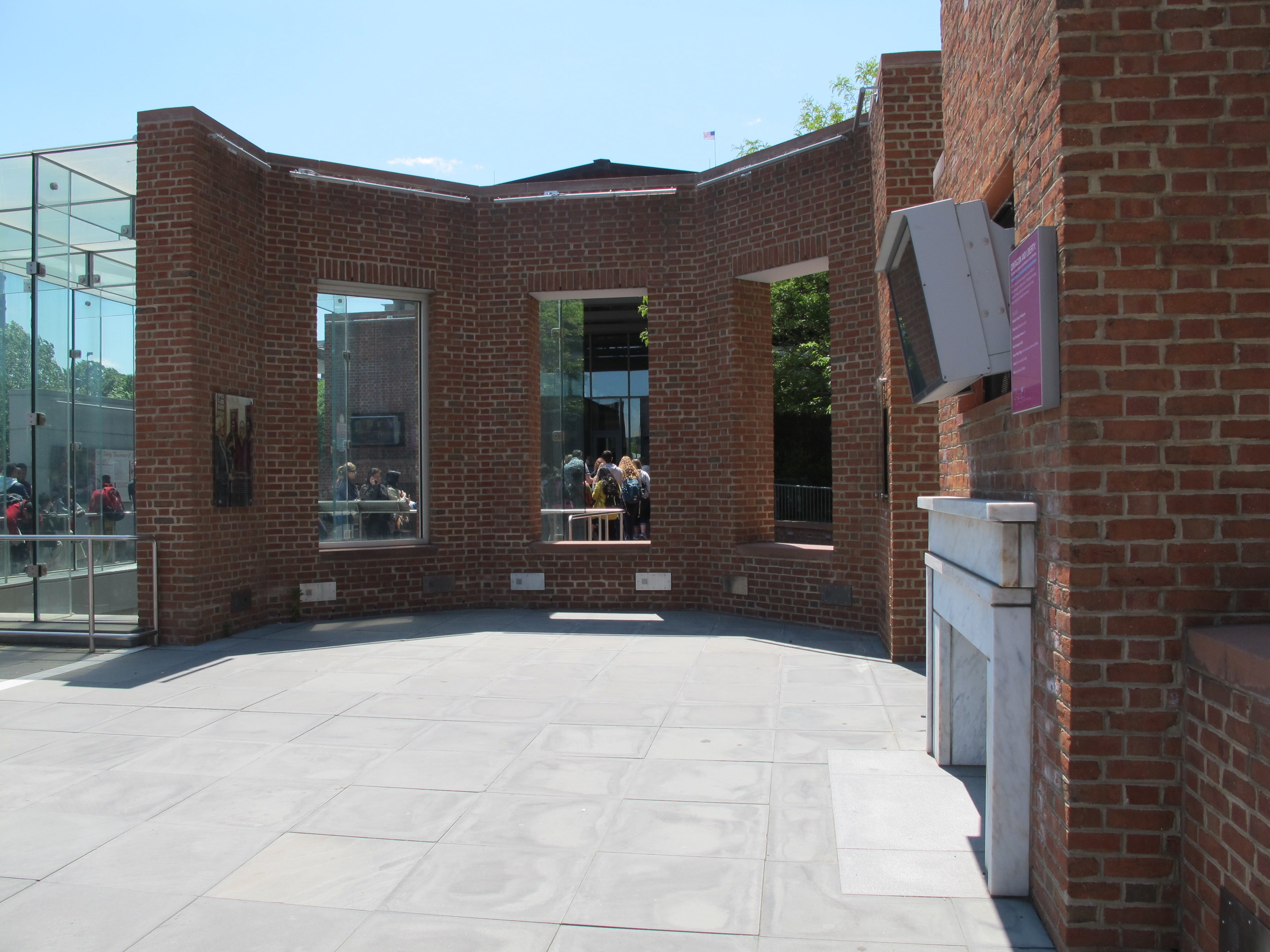Building Stories: President’s House
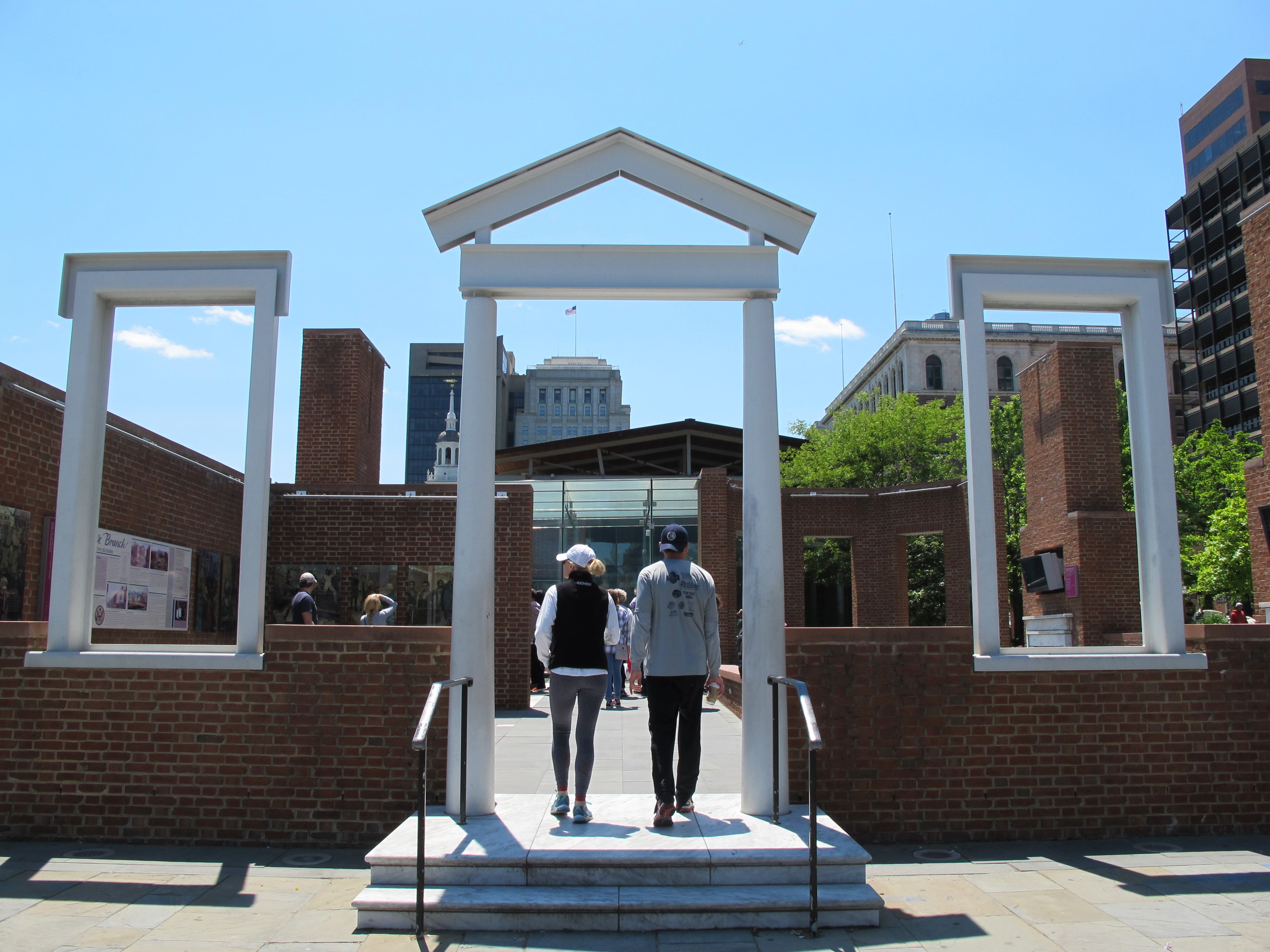
For our spring series Building Stories, we’re bringing you design postcards from around the city. We’re asking Philadelphia architects to take us to their favorite underappreciated or misunderstood buildings in Philadelphia, and explain what makes them great.
BUILDING: President’s House
YEAR OPENED: 2010
ARCHITECT: Kelly/Maiello Architects & PLanners
LOCATION: 6th and Market streets, Southeast corner [MAP]
WHO: Emmauel Kelly, Kelly/Maiello
WHY: INTERPRETATION, HISTORY, CONTROVERSY
Herds of tourists meander through the President’s House memorial at Independence National Historical Park every day. Some are waiting in line for entrance to the Liberty Bell pavilion. Others pause to read interpretive panels or watch videos, which describe the way two presidents and nine enslaved Africans lived here, likely oblivious to the controversy that accompanied the construction of this memorial. The memorial’s inception, discovery, planning, and design stirred debate at every step.
But with the fraught process that shaped the creation of the President’s House now years in the past, architect Emmanuel Kelly, principal of Kelly/Maiello which designed the President’s House, argues that the memorial itself is worth a second look: Its stories remain powerful and the design is intended as a framework to unify and tell multiple stories.
The structure is the footprint of a house, with a glass box attached to provide views into the archaeological remains.
“If you look at what’s here as a framework with architectural elements, one can begin to imagine being in a house. The windows, they’re just abstractions, and the doorway. The chimneys, fireplaces give some presence. The marble around the fireplace, you can begin to think of it as something interior,” Kelly explains. But the “wow” factor, he adds, comes from the ability to see the footprint of the original house below ground.
The archaeological investigations revealed the foundation walls of the nation’s first executive mansion, complete with a bow window that inspired the Oval Office. Even more profound was the discovery of a passageway that connected areas for servants and slaves to the main house, a physical link that showed that relationship.
“Where else do you get to work on a site you don’t have to create meaning? You’re just drawing it out. It’s here, you are just drawing it out and bringing it to people’s attention and you do see conflicts between freedom and slavery,” Kelly says, looking down at the archaeology.
The contradictions and stories are undeniably powerful, but so were the competing views of a large oversight committee, consultants, and political players who all had a say in what became of this site. As such, it is a work of compromise that was difficult from the word go. “The people aspect of it was extremely challenging to try and get consensus of a direction. These were not Quakers,” Kelly says diplomatically.
So what if we can strip away the cluttered, sometimes clunky interpretation and the troubled video screens and to see what Kelly sees? What do we see when we put the controversies of its creation behind us? A structure that offers a sense of grand domestic scale, with glass portals to view the past. The design is an attempt to serve many competing goals, many histories, and many publics. But the essential conflict of the site’s history is visible.
WHYY is your source for fact-based, in-depth journalism and information. As a nonprofit organization, we rely on financial support from readers like you. Please give today.



